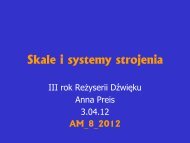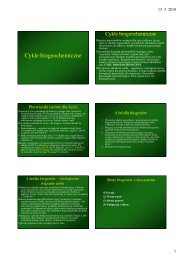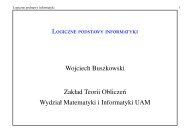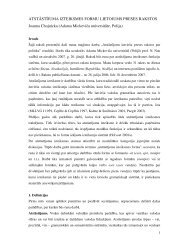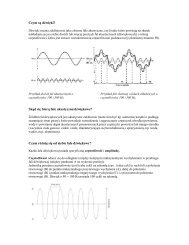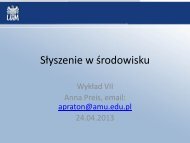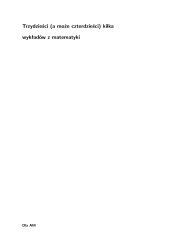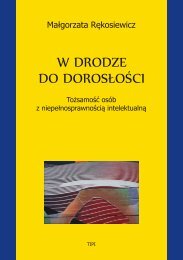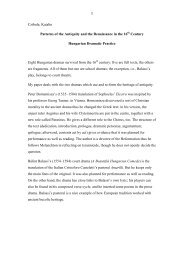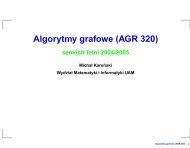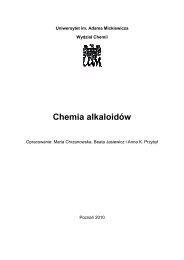Richard Carew. The Ordinary, The Ordinalia, and the Ordinary Actor ...
Richard Carew. The Ordinary, The Ordinalia, and the Ordinary Actor ...
Richard Carew. The Ordinary, The Ordinalia, and the Ordinary Actor ...
You also want an ePaper? Increase the reach of your titles
YUMPU automatically turns print PDFs into web optimized ePapers that Google loves.
<strong>Carew</strong>'s <strong>Ordinary</strong> 46<br />
44 E. K. Chambers took miraculum to be “a mere convenient shorth<strong>and</strong> for repraesentatio<br />
miraculi, <strong>and</strong> ‘came, especially in Engl<strong>and</strong>, to st<strong>and</strong> for ‘religious play’ in general.” He <strong>the</strong>refore<br />
specifically includes all of <strong>the</strong> religious pageant sequences in this category (e.g. York, Chester,<br />
Townley, Ludus Coventriae, Coventry, Newcastle, Norwich) as well as well as vernacular<br />
biblical plays (e.g., <strong>the</strong> Croxton Play of <strong>the</strong> Sacrament, Mary Magdalen, <strong>the</strong> Brome Abraham<br />
<strong>and</strong> Isaac, <strong>The</strong> Conversion of St Paul) <strong>and</strong> <strong>the</strong> Cornish Plays. Chambers, Medieval Stage, II, 104,<br />
407-436. This definition profoundly influenced such later scholars as Glynne Wickham, who<br />
titles his chapter on vernacular religious plays, “Miracle Plays” <strong>and</strong> refers to <strong>the</strong> religious<br />
pageant sequences as “Miracle Cycles.” Early English Stages 1300 to 1660. Volume One 1300 to<br />
1576 (London: Routledge <strong>and</strong> Kegan Paul, 1959), pp. 112-76. <strong>The</strong> use of <strong>the</strong> term “Miracle<br />
Play” in this inclusive way relies heavily upon <strong>the</strong> Wycliffite Tretise of Miraclis Pleyinge <strong>and</strong> a<br />
very few o<strong>the</strong>r mainly 15 th century texts. Clifford Davidson observes that “if <strong>the</strong>re were a<br />
‘precise’ meaning of <strong>the</strong> term ‘miraclis,’ however, it was not used in <strong>the</strong> Tretise in any exact way<br />
but instead seems to have been intended as a broad category that would link <strong>the</strong> word “miraclis”<br />
with a spectrum of dramatic activity ranging from <strong>the</strong> staging of religious scenes to<br />
representations on feast days <strong>and</strong> seasons such as Christmas.” He points out, however, that “at no<br />
point in <strong>the</strong> treatise are <strong>the</strong> great civic Corpus Christi cycles mentioned” even though “such<br />
dramatic spectacles were already in existence by <strong>the</strong> late fourteenth century.” A Tretise of<br />
Miraclis Pleyinge, edited by Clifford Davidson, Early Drama, Art, <strong>and</strong> Music Monograph Series,<br />
19 (Kalamazoo, Michigan: Medieval Institute Publications, 1993), p. 2. In addition, “clerk plays”<br />
were called miracula. <strong>The</strong>se were “written, directed, <strong>and</strong> probably performed by members of <strong>the</strong><br />
minor clergy, possibly in <strong>the</strong> churchyard, market-place, or outside <strong>the</strong> city walls ra<strong>the</strong>r than in<br />
<strong>the</strong> church.” <strong>The</strong>se are almost certainly one of <strong>the</strong> targets of <strong>the</strong> Tretise. Lawrence M. Clopper,<br />
indeed, would limit <strong>the</strong> Tretise’s attack principally to such miracula, which he construes as<br />
“clerical parodies <strong>and</strong> irrisiones” that largely consisted of “tricks intended to delight <strong>and</strong> amuse<br />
people <strong>and</strong> that, in many case, led people to devalue <strong>the</strong> truth of God’s miracles.” Such miracula,<br />
he thinks, died out in <strong>the</strong> 1530s about <strong>the</strong> time of <strong>the</strong> suppression of <strong>the</strong> monasteries. Clopper<br />
provides a helpful appendix listing all <strong>the</strong> references he can find to “Miracula, Miracles, <strong>and</strong><br />
Steracles in Medieval <strong>and</strong> Early Modern Engl<strong>and</strong>” Lawrence M. Clopper, Drama, Play, <strong>and</strong><br />
Game: English Festive Culture in <strong>the</strong> Medieval <strong>and</strong> Early Modern Period (Chicago <strong>and</strong> London:<br />
<strong>The</strong> University of Chicago Press, 2001), 106, 295-98. <strong>The</strong> appendix makes clear <strong>Carew</strong>’s<br />
glaringly singular use of <strong>the</strong> term, “Miracle Play.” Only in Manning’s H<strong>and</strong>lynge Synne (“swych<br />
pleys . . . as myracles <strong>and</strong> bourdys,” c. 1300), <strong>the</strong> Tretis of Miracles Pleyinge, <strong>and</strong> <strong>the</strong> Wife of<br />
Bath’s reference to “plays of myracles” (Chaucer, Canterbury Tales, D 555-58) do we find<br />
terminology that even distantly approximates <strong>Carew</strong>. One might thus say that Crew unwittingly<br />
invented <strong>the</strong> Miracle Play “genre.” This singularity is fur<strong>the</strong>r illustrated in <strong>the</strong> OED, where Crew<br />
is listed as <strong>the</strong> first use of <strong>the</strong> term “Miracle Play.” <strong>The</strong>reafter, <strong>the</strong> next reference to “<strong>the</strong>atrical<br />
pieces called ‘Miracles’” occurs in 1798 (Miracle Play <strong>and</strong> Miracle, sb. 2. b), <strong>and</strong> it <strong>the</strong>n is<br />
widely taken up by nineteenth-century historians.<br />
45 Joyce <strong>and</strong> Newlyn point out that “An existing place name in Sancreed, ‘Plain Gwarry,’ fur<strong>the</strong>r<br />
attests <strong>the</strong> presence in early times of a plain-an-gwary at that location.” REED Dorset Cornwall,



